Bear safety may be low on your camping list, especially if you are camping in the lower 48 states. However, with human populations ever encroaching into bear habitat, it is now estimated that bears live in 40 states. So, what does this mean for your family camping trip?
Types of North American Bears
The good news is that unless you are planning to take the family camping in Alaska, Idaho, Montana, Wyoming, or Northern Canada, you will likely not run into the two more aggressive of the three bear species that live in North America: polar bears and grizzly bears (brown bears). The third species of bear is the black bear.
Black bears live in remote, wooded areas but have been spotted in more populated areas over the years. Chances are good that if you do encounter a bear on a camping trip, it will be a black bear. They are the timidest of the three bear species, but there is always a chance they could attack if they feel threatened.
What Attracts Bears to Your Campsite
Bears are scent-driven, and their sense of smell is 2,100 times better than humans. For a little perspective, a dog’s sense of smell is 20 times better than humans. Bears are attracted not only to food scents but also to scents from seemingly inedible items like sunscreens, cleaning supplies, and toothpaste.
Because of their super-human olfactory senses, bears can smell leftover food scraps in the ashes of your fire pit or on otherwise clean dining utensils. Canned food, bottled drinks, and even screw-top jars are not safe when in bear country. Additional items that can attract bears include:
- greywater from cleaning dishes or washing hands
- bug spray
- pet food
- birdseed
- medications
- clothing you wore while cooking or fishing
- small, unattended pets
- trash
Bear Safety Tips
Since it appears there is very little that doesn’t attract bears to your campsite; you may be wondering what you can do to avoid serving up your family on a silver platter.
Don’t get us wrong, seeing a bear from afar can be a super exciting event to share with your family. Our kids lose their minds every time we have spotted not-often-seen wildlife on our camping trips.
If you are planning a family camping trip to places like Yosemite or Sequoia/Kings Canyon for the very purpose of seeing bears, be certain to follow each park’s specific rules. The following bear safety tips can be of assistance whether you want to see bears or want to avoid them altogether.
1. Prevention
It may sound obvious, but if you do not want to encounter bears, do not camp where there is known bear activity. Maps like this one from the National Park Service (NPS) offer valuable insight as to which parks and camping areas may have bears. As you can see, few areas are completely bear-free, so it is a good idea to follow the rest of these tips.
2. Camp and Play in Groups
It may serve you well to camp with another family. Larger groups naturally create more noise, which should keep most bears away. However, bears are also less likely to attack a group of people. It is advisable never to leave your camp alone and always take at least one other person with you on activities like hunting, fishing, or hiking.
3. Food and Beverage Storage
Just because you purchased a bear-proof cooler doesn’t mean bears will not try to get into it. Bear canisters can also be a useful if heavy, option for storing food. Believe it or not, bears can still smell all the delicacies or beverages in your top-of-the-line locking cooler or canister.
Because of this, it is a good idea to store your cooler inside your vehicle’s trunk. If there is no trunk, you should make sure all food items and coolers are covered. Some parks even have locking metal storage boxes and require all food, beverages, and toiletries to be stored when not in use. Other parks require you to hang all your food supplies 10-15 feet off the ground and provide mechanisms to achieve this at their campsites.
4. Recognize Bear Activity
Maybe you found a campsite where there have been no known bear encounters. There is a first time for everything. Look out for things like bear scat, paw prints, dead carcasses (or scavenger birds in the area), and tree scratches. These are some ways bears mark their territory.
Bears, like many animals, walk along specific routes and form their own trails. These trails can be hard to decipher from human-made trails. If you notice yourself crouching down on the trail, there is a good chance it is a bear trail, and one will probably be using it soon.
Bears are known to eat a variety of wild berries in the wilderness. Should you come across some berry bushes, proceed with caution. This could be a common feeding spot for many bears. Additionally, bears are most active at dawn and dusk, so avoid activities during those hours.
5. Food Preparation and Cleanup
Food preparation and cleanup is extremely important, especially if you are hunting or fishing for some of your meals. Always clean animals away from your campsite and use rubber gloves and aprons when doing so. Send any remaining carcasses downstream if possible.
When cleaning cookware or dinnerware, always dump your grey water at least 100 yards from where you sleep. Even the tiniest food scraps in leftover dishwater can attract a hungry bear. All of your cookware and dinnerware should also be stored with your food items.
6. Bring Unscented Toiletries
A bear will still be able to smell your unscented deodorant, and that may be a risk your family is willing to take. Still, it is wise to stay away from heavily-scented toiletries while camping. Your plumeria-vanilla scented lotion or shampoo will not be doing you any favors at the campsite, although the mosquitoes may enjoy it.
7. Useful Items to Bring on Your Camping Trip
Our final bear safety tip is about a few simple items you can bring along to protect you should you encounter a bear after adhering to all the tips. First of all, a personal air horn can help to scare a bear away. This is useful if you happen to see a bear coming toward your campsite. As mentioned, bears are leery of noise, and an air horn can send them off in retreat.
There is also bear spray, which is essentially pepper spray for bears. Unfortunately, this only works at a relatively close range and should not be used as a repellent. If sprayed low when a bear is charging, it can stop it in its tracts. Keeping a can of bear spray in a holster on your belt is recommended whenever venturing out in bear country.
What to do if you Encounter a Bear
If you happen upon a bear while hiking or spy one lumbering up to your camp, don’t panic. Do not run away, as this will make the bear instinctually chase after you. Your best option is to slowly back away while speaking gently to the bear. Do not make direct eye contact. Pick up small pets and children and retreat to your vehicle if possible.
Spotting a bear in nature can be exciting and terrifying. It can also be deadly. If a bear is attacking you, fighting back and focusing on punching the eyes and nose is your best bet.
However, simply being prepared and aware before you camp in known bear territory should be enough to protect you and your family from disaster. We hope our advice on bear safety helps get you ready for your next family adventure. Happy camping!

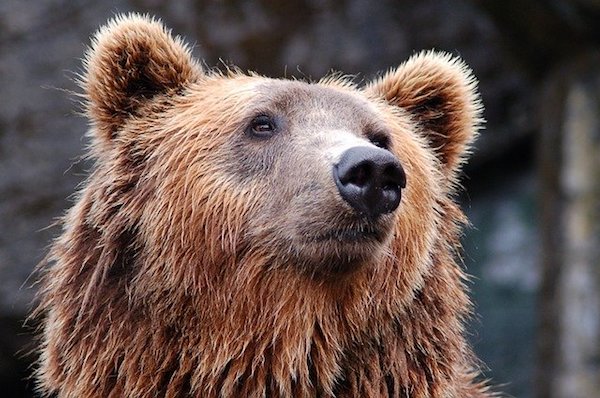
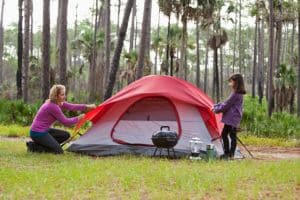
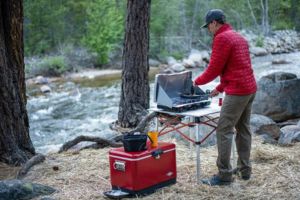
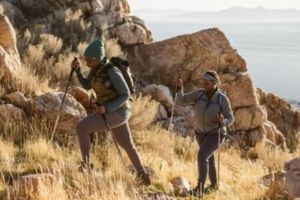
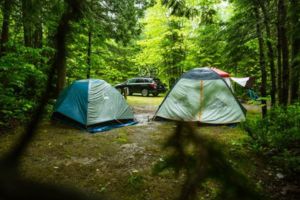
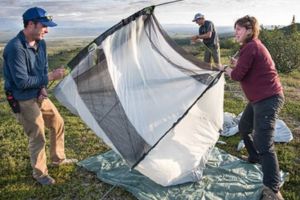
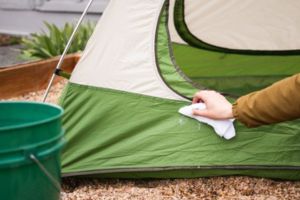
Leave A Comment